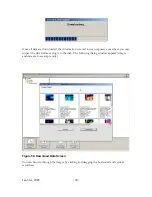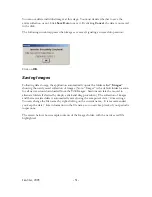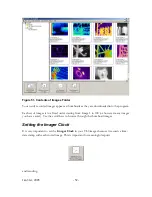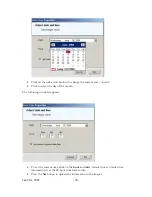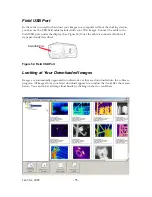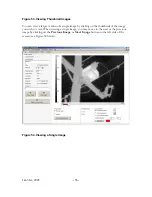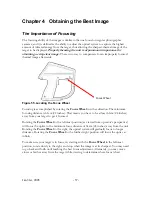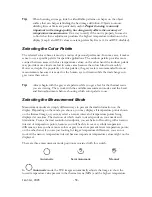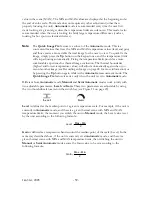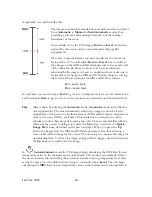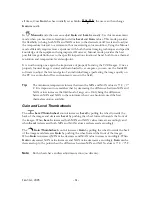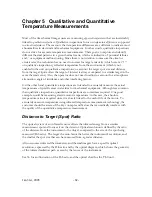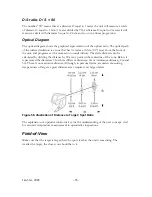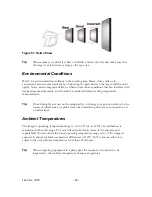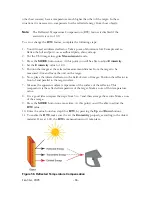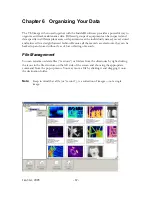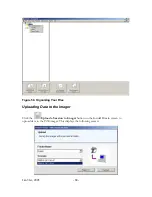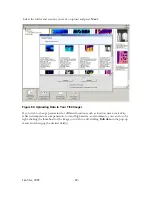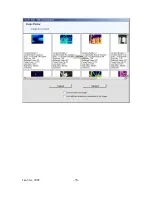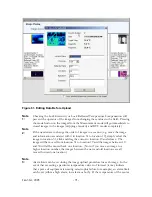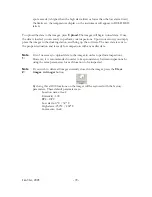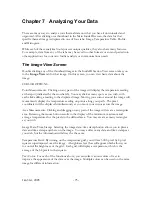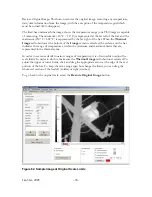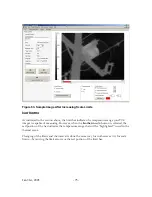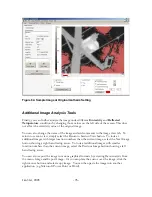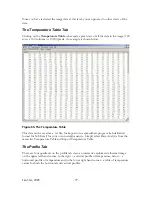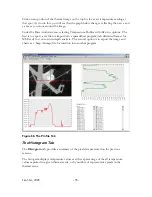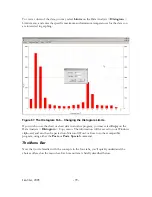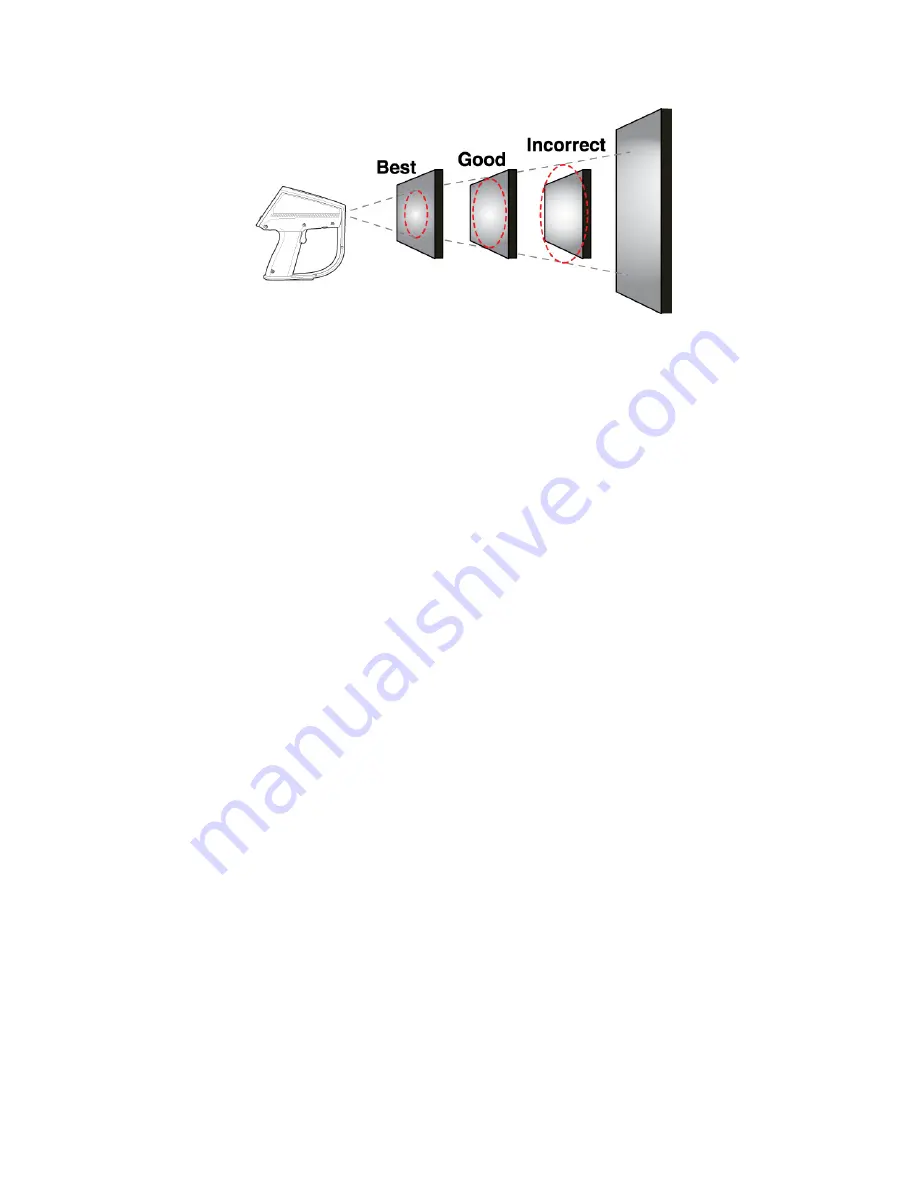
Figure 57. Field of View
Tip:
When accuracy is critical it is best to build in a factor of safety and make sure that
the target is at least twice as large as the spot size.
Environmental Conditions
Watch for environmental conditions in the working area. Steam, dust, smoke, etc.,
can prevent accurate measurement by obstructing the path between the target and the unit's
optics. Noise, electromagnetic fields, or vibration are other conditions that can interfere with
temperature measurements, and should be considered before starting temperature
measurements.
Tip:
If interfering factors can not be mitigated try to change your position relative to the
source of interference, or pick a time when interfering factors are not present or at
a smaller level.
Ambient Temperatures
The imager’s operating temperature range is -10 to 50
°
(14 to 122
°
F). Its calibration is
maintained within this range. The unit will not perform in terms of the accuracy and
repeatability if used outside the stated operating temperature range. Also, if the imager is
exposed to abrupt ambient temperature differences of 10
°
C (18
°
F) or more, allow it to
adjust to the new ambient temperature for at least 20 minutes.
Tip:
When inspecting equipment in a plant, plan the sequence of locations to be
inspected so the ambient temperature changes are gradual.
Jan 31st, 2005
- 64 -
Summary of Contents for Ti30
Page 4: ...Appendix B Infrared Theory Q A 92 Glossary 96 Jan 31st 2005 4 ...
Page 25: ...Man Machine Interface Flow Charts Main Loop Jan 31st 2005 25 ...
Page 26: ...Image Recording Procedure Emissivity Adjustment Procedure Jan 31st 2005 26 ...
Page 70: ...Jan 31st 2005 70 ...
Page 86: ...Jan 31st 2005 86 ...

